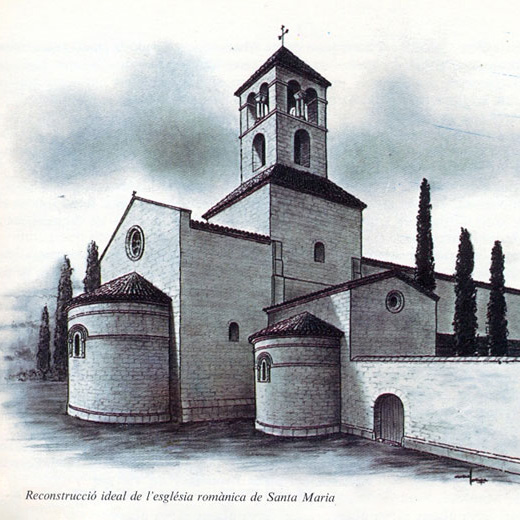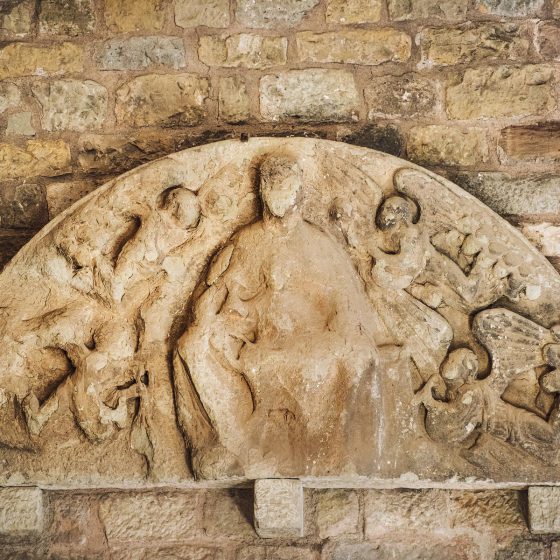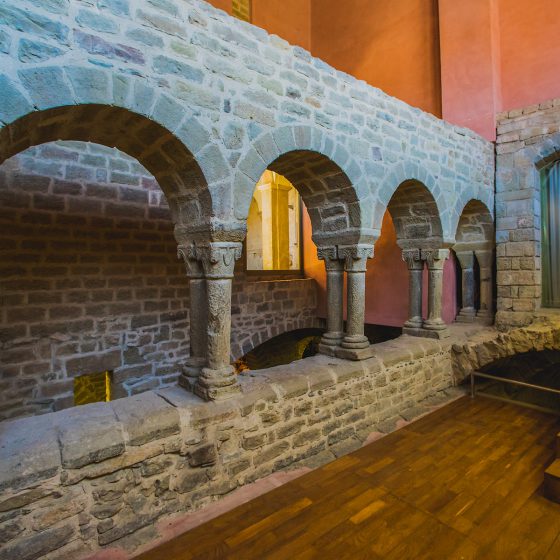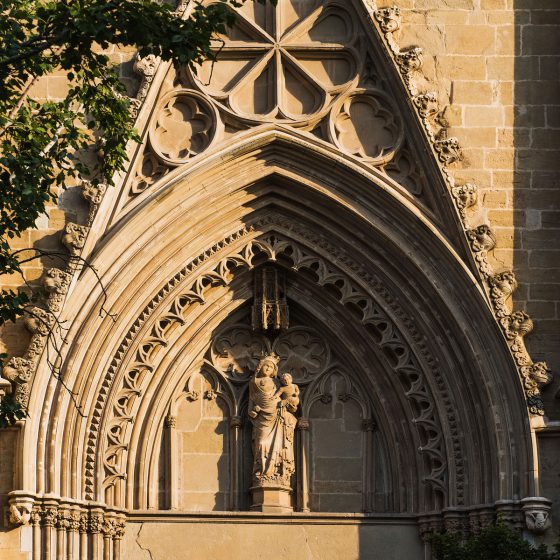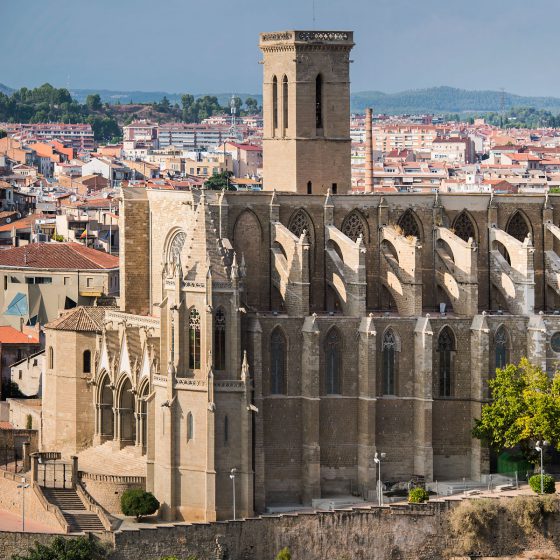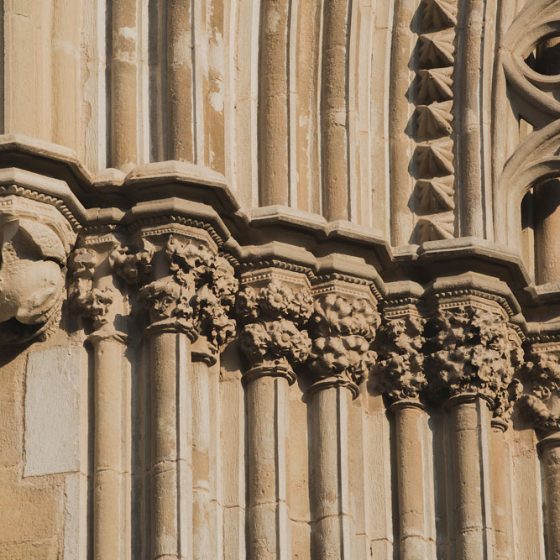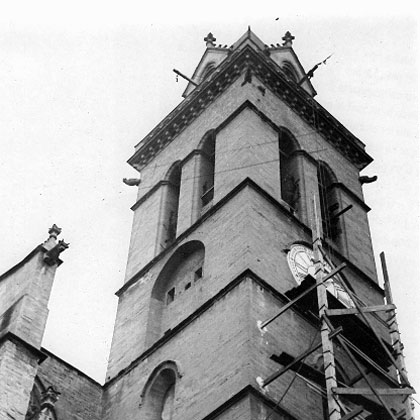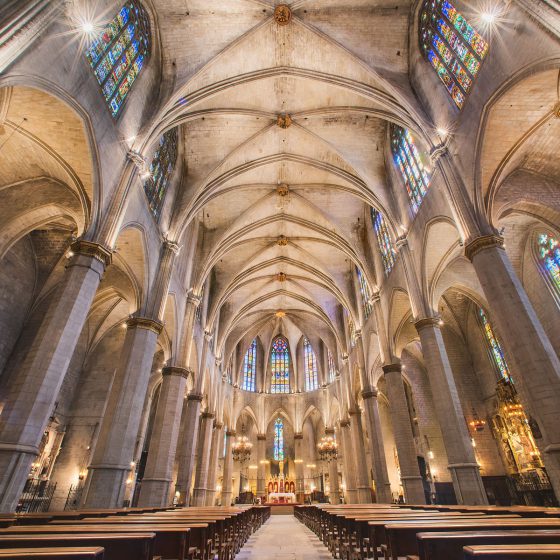History
The origins of the Seu of Manresa date back to the 9th century with a first worship building at the top of the Puigcardener. Today, the basilica is still evolving.
From the origins to the Gothic
The promontory of the Puigcardener, raised beside the Cardener River, is where the city of Manresa was founded with a first Iberian town.
Followed by a Roman fortress, this place was the base of the historical development of the city, which started its consolidation during the medieval period.
It is at the end of the 9th century when we find the first reference of a worship building at the Puigcardener that later on, in the 12th century, it was going to turn into a Romanesque church, of which we know its perimeter which is the base of the Gothic temple.
There are still some traces remaining from that Romanesque building; the doorway tympanum, a window and the cloister.
The Gothic
In the 13th century the city of Manresa begins its Gothic golden age raising its peak during the 14th century, under the reign of the king Pere III, The Ceremonious. As in 1296 the city talks about the need of reforming the old Romanesque church, but it is not until the end of 1322 when the architect Berenguer de Montagut is commissioned to build the Gothic temple.
The city’s Gothic splendor is reflected by the walls expansion, the churches of Carme, Sant Pere or Sant Miquel, the Sèquia (irrigation ditch).
The Seu’s work was possible thanks to the faithful donators and thanks to the pushful spirit of Manresa’s inhabitants from that time. In 1328 the foundation stone was laid and in 1353 worship was celebrated in the new church.
From the Modern age to the present
The Gothic Seu culmination was at the end of the 15th century and from then on the temple has incorporated elements following each era’s style. Since the 16th century, with the tower and the crypt (decorated in Baroque style in the 18th century) until the beginning of the 20th century, when the façade and the Neo-Gothic baptistery were built, the Seu went from the Gothic to the Renaissance and from the Baroque to the Neo-gothic.
The modern era was devastating for the monument adding the city burning during the Succession War and the French War. The 19th and 20th centuries reinforcement works were blocked again in the 1936 War, in which a big part of the Seu’s heritage was lost.
What remains of the Seu today is the testimony of the city’s history, of its glory and its dearth.

